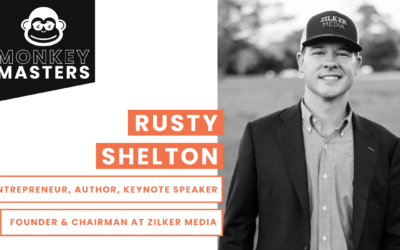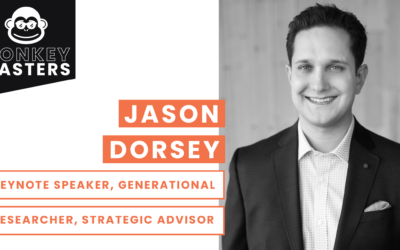
Having covered all the pitfalls to scaling a sales team, now I can share the 5-step formula for “finding the right cat.” It’s your key to scaling a sales team and taking your business from start-up into hyper-growth mode.
Part 4: or Can I Finally I See the Damn Formula?
I have spoken to so many CEOs who had to let a head of sales go, and the conversation usually includes some or all of the following comments:
“He had such a strong record on paper – I don’t know why he didn’t work out.”
“Her references were amazing…everyone raved about her ability to sell just about anything.”
“He blew us away in the interview process – I don’t think I ever came across a more impressive executive in the recruiting process…”
“I really don’t know why he didn’t work out. Our pipeline is still strong, our message seems to resonate, but we just weren’t closing business.”
The biggest learning for me in all of this work was a pretty simple but powerful realization – and it is the key to getting from start up to growth company.
Hiring great sales reps and sales leaders is damn hard (see Part 1, Part 2 and Part 3 as background), but it doesn’t have to be impossible or thought of as about as promising as buying a lottery ticket.

But you need to have a formula and a scalable process and playbook to hire the right rep for the job. This shouldn’t be guesswork – and it won’t be if you are willing to do the work to get what you really need from your sales team.
So, yeah, enough of what not to do. Can we see this damn formula already?
Here is my five-step process that I call “KNOW THY CAT.” It’s important to note that it is really focused on B2B sales versus consumer-oriented sales; however I do believe it works for both Enterprise and SMB sales. I also think it works for both complex and transactional sales model that are sold directly to an end user or buyer. Here it goes…
STEP ONE: Be very clear about how you are winning sales (function, price, ROI, etc.), what is resonating from the value proposition in the marketplace, and who is the REAL buyer.
This seems pretty simple, but there are nuances in each of these items. For example, many executives fail to understand who the real “buyer” is in a sales cycle. This can be very different from who the first call goes to. In short, the real buyer is the final person in the sales cycle that needs emotional buy-in to say yes. Many businesses fail to recognize just how often this is the CEO.
This step is so important because you have to start with the end in mind – and plan backwards. Think about what will make the ultimate buyer say yes – and map out *every* step of the process from there.
NOTE: this is the exact opposite of how most marketing teams think as it relates to leads, demand-generation or awareness.
Start with the final approver in the sales process and work backwards: essentially reverse-engineer the win process. You will be amazed at what you discover.
STEP TWO: Look at your very best sales person, and spend time understanding just what she does to be successful.
If you are a CEO in a startup, you should be going on sales calls with her and observing (not talking!) and watching how the prospects respond to various value propositions, questions, or other aspects of the solution positioning. Map what she does along every step of the sales cycle and document it so you now have a model that can be replicated.
As a side note: you should *not* be surprised if she doesn’t want you to do any of this, but it is ok to “demand it” – you are the CEO after all – but do so nicely.
Most successful sales reps will be highly protective of what they are doing and this is ok, don’t fight it.
Rather, just go on the call, observe what is working and compare it to your findings in step one. You now have a NON-QUANTITATIVE sales map / process that is specific FOR YOUR BUSINESS.
STEP THREE: Take your model / map and look at how this translates into the *attributes* that make a sales professional successful.
So now you have a clear picture of who buys from you, how that moves through a sales process, and just what activities a good rep does to make sales happen. Now you need to take that information and build out a detailed “attributes” map or profile that highlights the specific skill set you want in each of your sales reps.
For example, how much of her time did she spend researching the prospect? If the answer is a lot, you need to test for that in the interview process and be explicit about this when talking to prospective sales hires.
Or maybe you need a cold-calling animal that relies mostly on tenacity to be successful. Examine if your reps are building their own ROI model to close the sale and using it repeatedly in the sales cycle.
If this is the case, you better start to look for financial acumen as part of your sales hiring attribute model. In short, you need to look for a pattern of skills that you can begin to screen for in other sales executives – i.e., know what you are (and are not) looking for in your sales team.
STEP FOUR: Examine your hiring plan for sales reps, including how you are interviewing them based on what you have learned.
Specifically, compare the attributes you discover in steps 2 and 3 and compare them with your firm’s interviewing process: questions, skill map, even who is part of the interview process. If there isn’t a strong connection between steps 2, 3 and 4, you need to reinvent the process ASAP.
For example, it was at this point when we determined that a case-based approach with lots of quantitative analysis was the key to winning for our business.
From this we built a case that would screen for these skills, and we used it religiously in our hiring process.
It was hard work, and it forced us to reinvent a lot of the tools we had in place (oh, and it pissed off our HR team) – but in the end it was this commitment that enabled us to win in the marketplace.
STEP FIVE: Track success (or lack thereof) by sales rep over a 6, 12 and 18 month period.
I would love to tell you that we got all of this right on the first try, and then never ever had to examine this part of our business again. The truth is, we missed a lot of things the first time through AND we learned something new every time we hired a new rep.
The key was to track how we did over time and not let early wins or losses fool us or get us down. Rather, we tracked our success rate in a highly analytical way and we consistently reinvented and modified our process.
We invested a lot of time, energy, hard work and commitment to getting it right. But we knew that our future dependent on it, and we were laser-focused on working and winning as a team.
In the end, it all worked out in a really great way – and I hope this helps any CEO, entrepreneur or investor find the right cat. Getting sales right is the key to taking your idea, dream or emerging growth to the real next level – by knowing thy cat you will be one step closer to making this happen.


